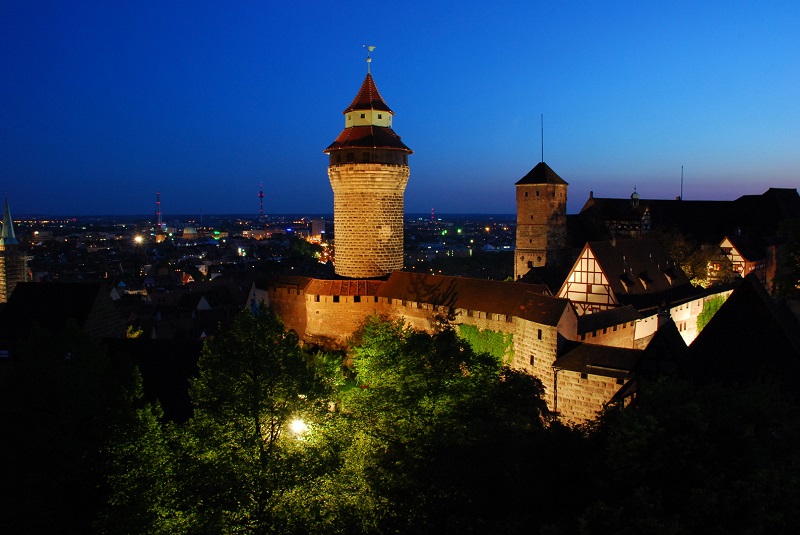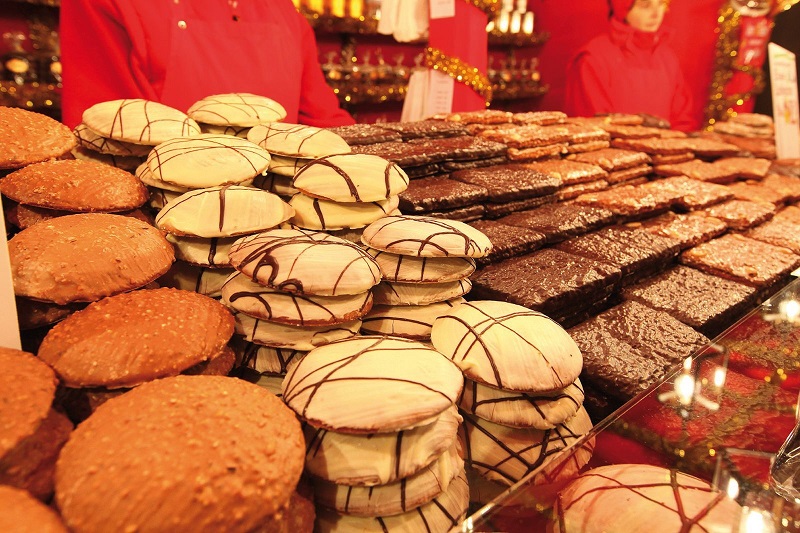Since the medieval times, Nuremberg has reflected a fascinating and rather eventful history of Germany. Emperors and princes, leaders and followers, inventors and scholars, all played their role in the city’s intricate story. In addition to its impressive past, the city is also well known for its architecture, its splendor and its art. For many, the mention of this town calls to mind the images of romance, toys and the world-famous ginger bread cookies – Nurnberger Lebkuchen.

The German National Museum is known as the biggest museum of cultural history in Germany. The Museum’s collection is impressive. The exhibits showcase the complete development of German society, from the early beginning, to the medieval era, to baroque, the Renaissance, and the Reformation all the way to the 19th century. This fantastic insight into the past of this country is made possible by no less than 1.3 million exhibits on display!
Precious Artefacts
The museum’s impressive collection includes the oldest globe, made by Martin Behaim in Nuremberg. One of the many fascinating features of the globe is that it does not include America. It was not charted, since the globe was made in 1492 – the year when Columbus set sail, hoping to discover the New Continent. In addition to being the birthplace of this fascinating globe, Nuremberg, which used to be the leading center of the goldsmith and watchmaking trade in the 16th century, was the place where the first pocket watches, also known as the Nuremberg eggs, came from. It is commonly believed that their name came from their oval, egg-like shape, but the truth is that the name really resulted from a rather common pronunciation error. At the time, most people pronounced the word Auerlein, meaning “watch”, as Eierlein, meaning “a small egg”. That’s the true story of how those intricate and ornate pocket watches got their name.

The Goal Ahead: To Became the Leading Human Rights City
Right outside of the German National Museum is the Way of Human Rights, a monumental sculpture designed by the Israeli artist Dani Karavan. Each of the 30 8-meter high pillars has one article of the Universal Declaration of Human Rights engraved on its surface. This sculpture is a part of Nuremberg’s efforts to shake off its sinister past and reinvent itself as a city of peace and human rights.

Nuremberg is also known for the Nuremberg Trials. The Documentation Center and the Court Room No. 600 of the Palace of Justice were turned into the Nuremberg Trials Memorial in 2010 and since then serve as a reminder of the legendary trials. That very courtroom was the place where the leaders of the Nazi regime had to answer for their crimes in 1946. The Courtroom was inscribed on the World Heritage List, while the Documentation Center was awarded the UNESCO Prize for Human Rights Education.
Old Town
Nuremberg old town owes a lot of its charm to its cultural heritage and its fascinating medieval architecture. The restored old town center featuring charming passages and historical buildings is ideal for a relaxing stroll and sight-seeing. There are many cafés nearby, providing the perfect setting for a quick break.
For the past 400 years, thousands of lamps bring the festive atmosphere to Nuremberg’s old town during the famous Christmas Fair – locally known as the Christkindlesmarkt, one of the oldest and certainly one of the most famous Christmas fairs in the country. There are written records testifying to the early days of such festivities, which date back to the 17th century. It was since those days that toys have been sold during the fair. The fair attracted countless vendors eager to showcase and possibly sell their intricate miniatures and toys. Fascinating exhibits dating from those times, such as some rather impressive dollhouses, can still be seen today, in the Toy Museum. It comes as no surprise that Nuremberg is also the venue of the world’s leading International Toy Fair since 1950.
Nuremberg is also the home of the Railway Museum. The Museum’s collection includes the Adler locomotive – the world’s first locomotive, which offers a unique insight into the early development of modern transportation.

An Air of True Renaissance
In addition to many artists and inventors who lived here, between 1471 and 1528 Nuremberg was the home of one of the most famous German painters, Albrecht Durer, who has always been highly acclaimed for his achievements. When he was 13, this brilliant artist made a portrait of himself. Today, that portrait is one of the oldest known child portraits in the paper medium. His home is the only home of a Renaissance artist in this part of Europe to have been fully restored and completely preserved in its authentic form.
Nuremberg is also well known for its beautiful city halls, extraordinary fountains and delicious food. The most famous dish in this part of the world is the grilled sausage, which gained popularity long ago, in the early 14th century. The original recipe has never been changed since those days. Nuremberg also boasts its own cookie – the world famous Nuremberg Gingerbread Cookie.

Affordable flights from Tuzla to Nuremberg
If you are eager to experience this lovely city, you should know that you can reach Nuremberg at a reasonable rate. Affordable flights are now available through Wizz Air, a company operating from Tuzla Airport. Round trip plane tickets from Tuzla to Nuremberg are available at a modest minimum price of 70 KM. The Nuremberg Airport is some 7 km away from the city center.